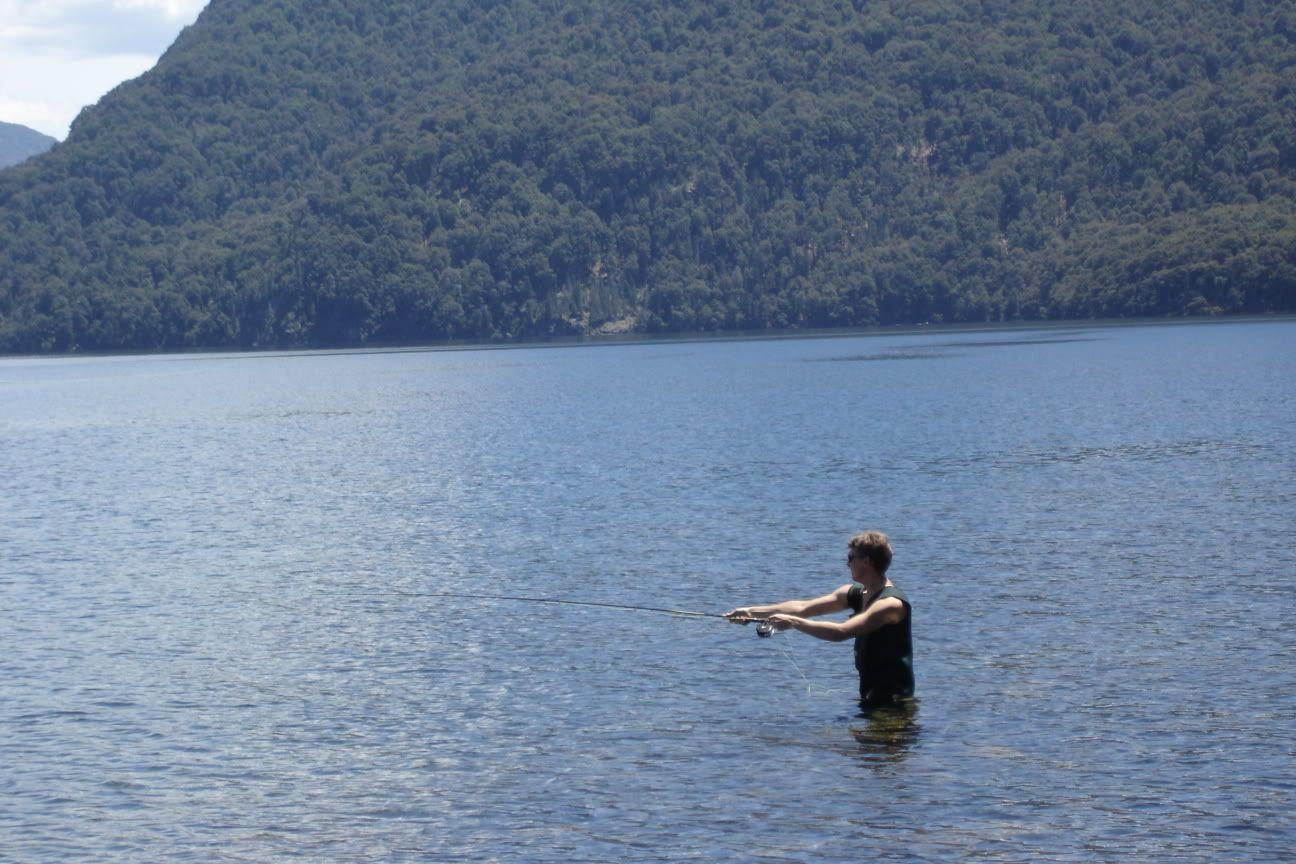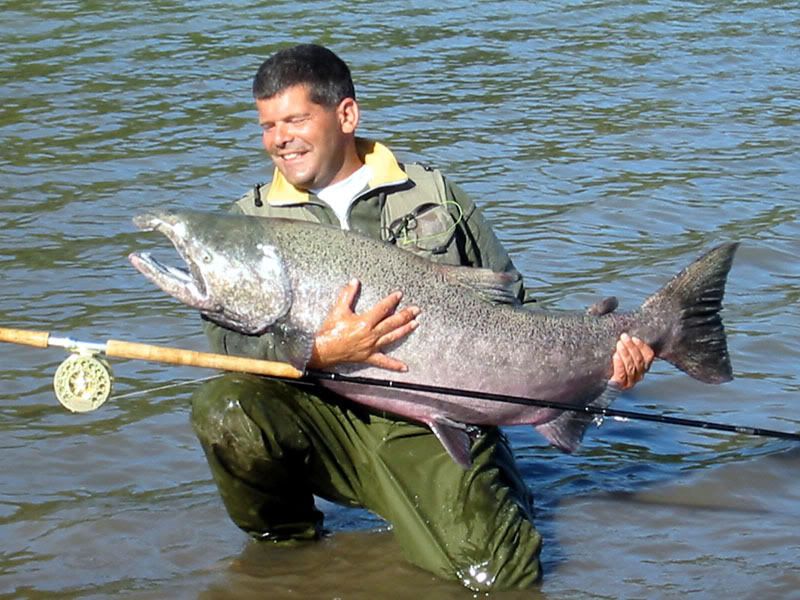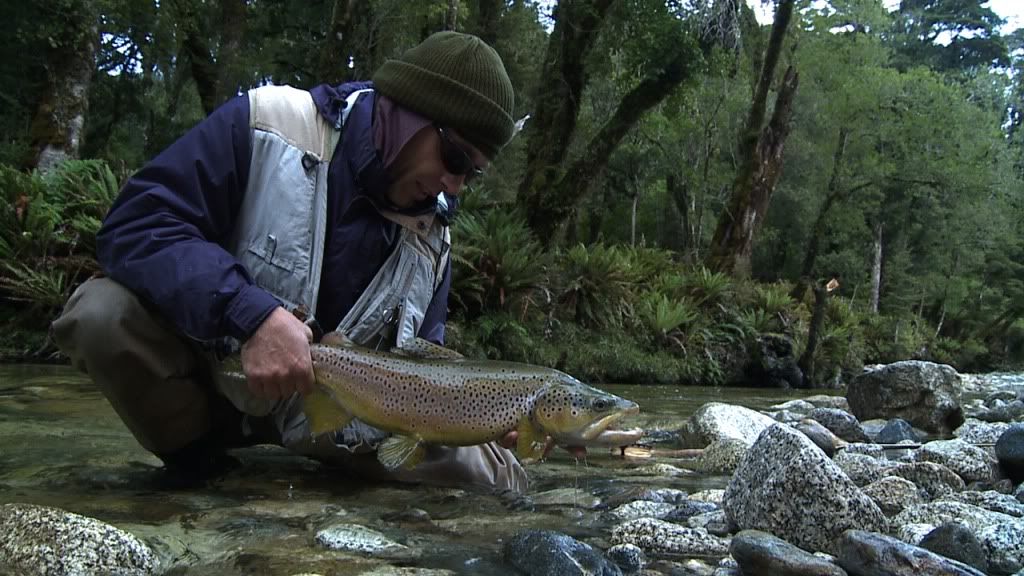Trout Fishing Flies
If you ever get a chance to go to a fly fishing specialty shop, I highly recommend going; even if you never intend on fly fishing in your life. These shops have in-store fly tying and it is truly an art form. The level of detail and the amount of knowledge needed to tie an effective fly is staggering. Sadly, as we become less engrossed with outdoor activities, fly tying is beginning to become a lost art. There are, thankfully, many books available on how to tie fly's so it won't be delved into in this website specifically.
The Purpose of the Fly in Fly Fishing
The goal of any fly fisherman is to pick artificial flies that are as perfect of imitations of the real thing as possible. This includes how they look, where they are in the water, what stage of development the insect should be in at that time and what the fish enjoy eating. The good fly fisherman:
1. Has done research into what insects are in an area, when they hatch.
2. Has also observed what type of real insects are active and where they are active to try to match their chosen artificial fly to those that are being offered.
The Life Cycle of Insects
To begin working with flies and choosing the right ones, a brief review of the biology of bugs is in order. All bugs are born from eggs and from there they go into one of three cycles to get to maturity.
1-Step Cycle
Insects that mature in this fashion simply hatch as small versions of the adults and begin growing and shedding their skin until they reach adulthood.
3-Step Cycle
Bugs that go through 3 steps go through Egg, Nymph, Adult stages of life. This process is known as simple or incomplete metamorphosis. This type of metamorphosis is almost exclusive to water-born insects, with the nymph stage being a larval stage that is wingless and water bound. The insects look just like adults but without wings.
4-Step Cycle
Insects that go through 4 steps to reach adulthood go through complete metamorphosis: egg, larva, pupa and adult phases. The butterfly is a classic example of this metamorphosis.
Fly Basics
Each type of fly is designed to mimic one of the stages of an insect.
Dry Flies
Dry flies are designed to float on the surface of the water just like an adult insect would. In the early morning or late afternoon, trout will surface to eat the bugs on the surface. If you see bugs on the surface, you will want to try to match your fly as best possible to what is already there. Try to match the color, size and shape as best as possible.
Wet Flies
Wet flies differ from nymphs as they are imitations of full grown adult bugs. That said, they are fished the same way. If you see fish splashing the surface, but no bugs on the surface, chances are there are sub-surface insects, so using a wet fly and a really slow sink rate on your line would be a good combo to get the fly in the right place.
Nymphs
This pre adult insect typically swims around near the surface of the water. In general, trout love nymphs and fishing with nymph flies can be the easiest type of fly fishing you can do.
If you ever get a chance to go to a fly fishing specialty shop, I highly recommend going; even if you never intend on fly fishing in your life. These shops have in-store fly tying and it is truly an art form. The level of detail and the amount of knowledge needed to tie an effective fly is staggering. Sadly, as we become less engrossed with outdoor activities, fly tying is beginning to become a lost art. There are, thankfully, many books available on how to tie fly's so it won't be delved into in this website specifically.
The Purpose of the Fly in Fly Fishing
The goal of any fly fisherman is to pick artificial flies that are as perfect of imitations of the real thing as possible. This includes how they look, where they are in the water, what stage of development the insect should be in at that time and what the fish enjoy eating. The good fly fisherman:
1. Has done research into what insects are in an area, when they hatch.
2. Has also observed what type of real insects are active and where they are active to try to match their chosen artificial fly to those that are being offered.
The Life Cycle of Insects
To begin working with flies and choosing the right ones, a brief review of the biology of bugs is in order. All bugs are born from eggs and from there they go into one of three cycles to get to maturity.
1-Step Cycle
Insects that mature in this fashion simply hatch as small versions of the adults and begin growing and shedding their skin until they reach adulthood.
3-Step Cycle
Bugs that go through 3 steps go through Egg, Nymph, Adult stages of life. This process is known as simple or incomplete metamorphosis. This type of metamorphosis is almost exclusive to water-born insects, with the nymph stage being a larval stage that is wingless and water bound. The insects look just like adults but without wings.
4-Step Cycle
Insects that go through 4 steps to reach adulthood go through complete metamorphosis: egg, larva, pupa and adult phases. The butterfly is a classic example of this metamorphosis.
Fly Basics
Each type of fly is designed to mimic one of the stages of an insect.
Dry Flies
Dry flies are designed to float on the surface of the water just like an adult insect would. In the early morning or late afternoon, trout will surface to eat the bugs on the surface. If you see bugs on the surface, you will want to try to match your fly as best possible to what is already there. Try to match the color, size and shape as best as possible.
Wet Flies
Wet flies differ from nymphs as they are imitations of full grown adult bugs. That said, they are fished the same way. If you see fish splashing the surface, but no bugs on the surface, chances are there are sub-surface insects, so using a wet fly and a really slow sink rate on your line would be a good combo to get the fly in the right place.
Nymphs
This pre adult insect typically swims around near the surface of the water. In general, trout love nymphs and fishing with nymph flies can be the easiest type of fly fishing you can do.
Find more fly fishing information at http://www.catchmoretrouttoday.com
Article Source: http://EzineArticles.com/?expert=Mark_Keegan
see my previous post: Saltwater Deep Jigging - Hot New Fishing Method Proven to Entice Trophy Size Fish
see my previous post: Saltwater Deep Jigging - Hot New Fishing Method Proven to Entice Trophy Size Fish
















{ 0 comments... read them below or add one }
Post a Comment